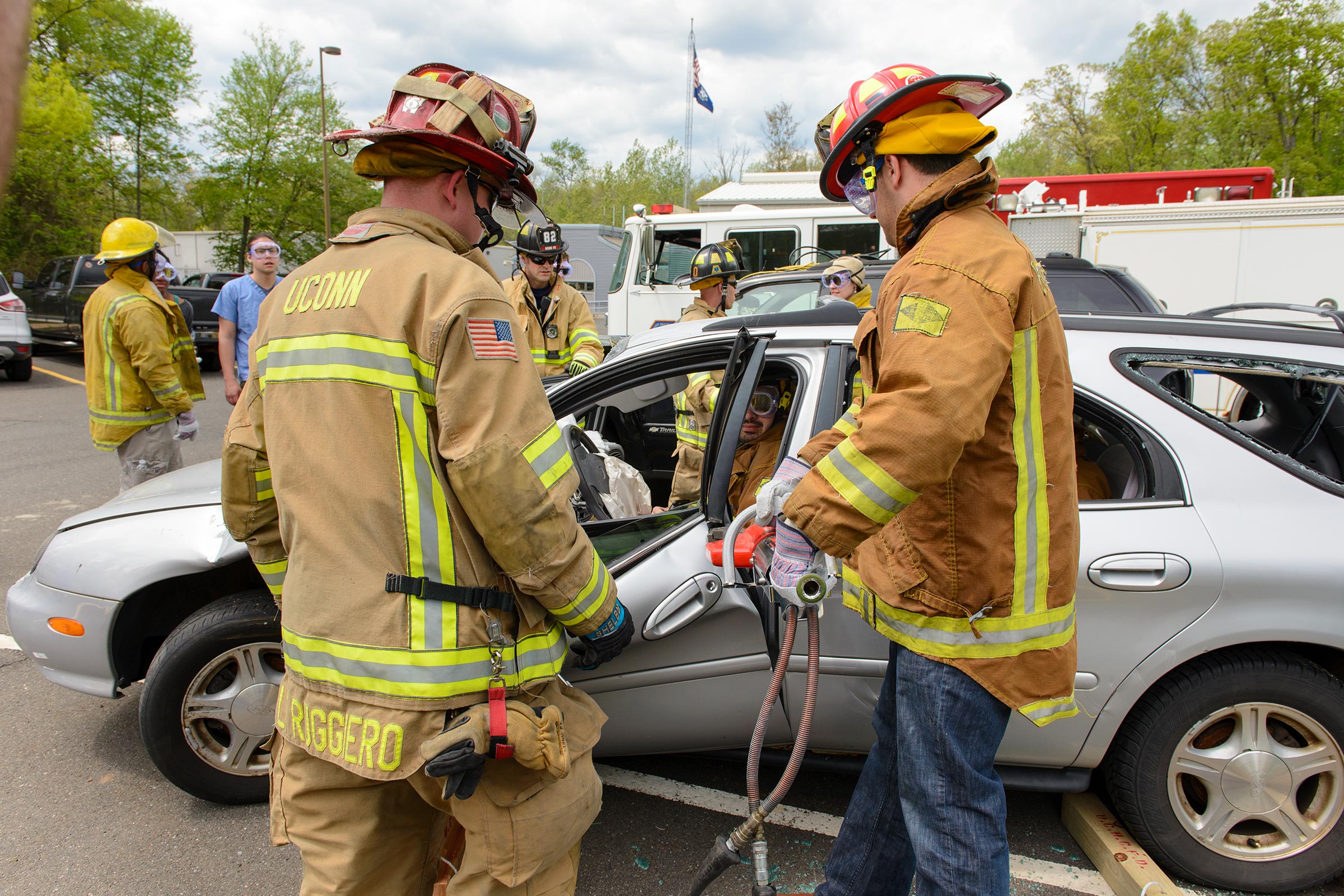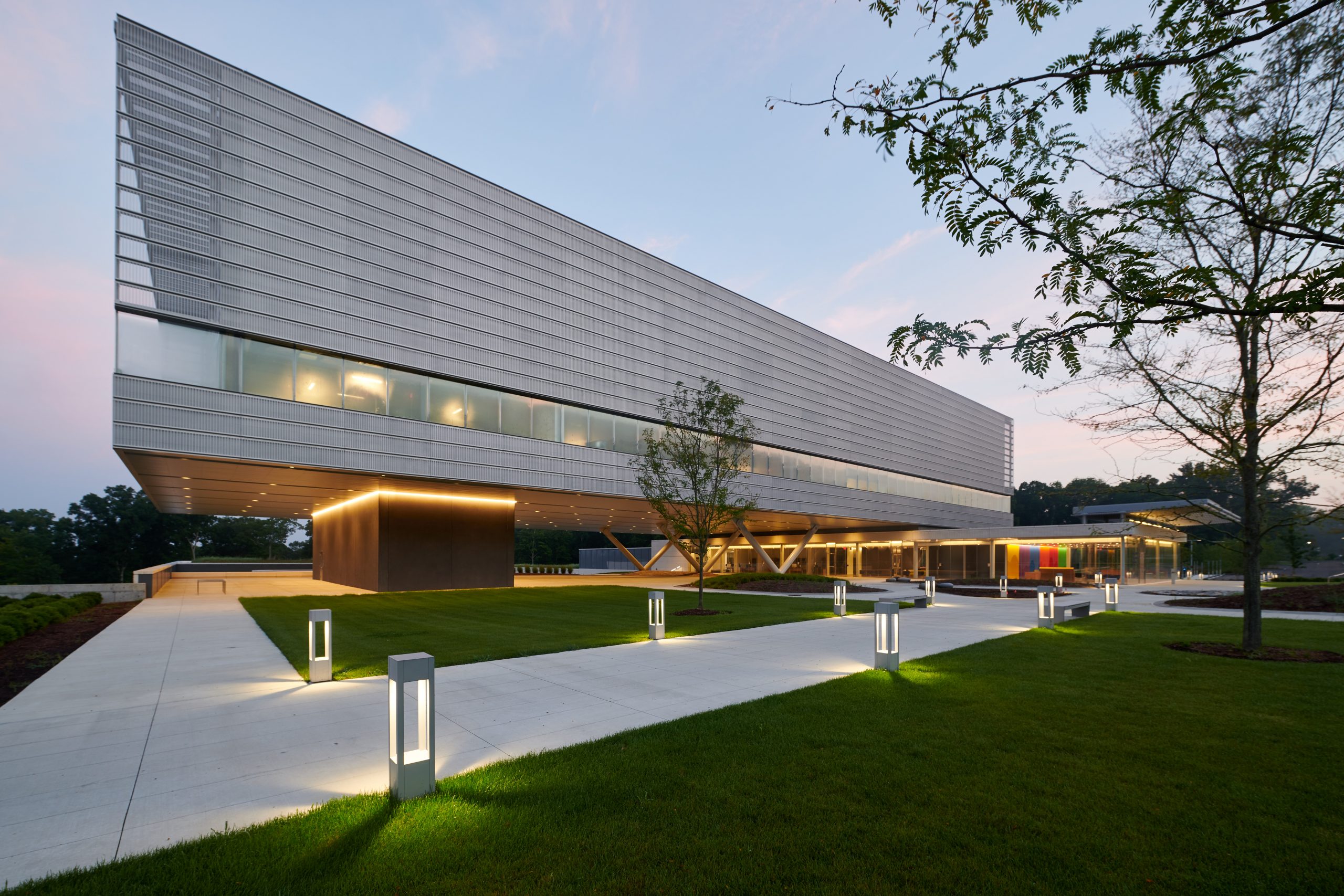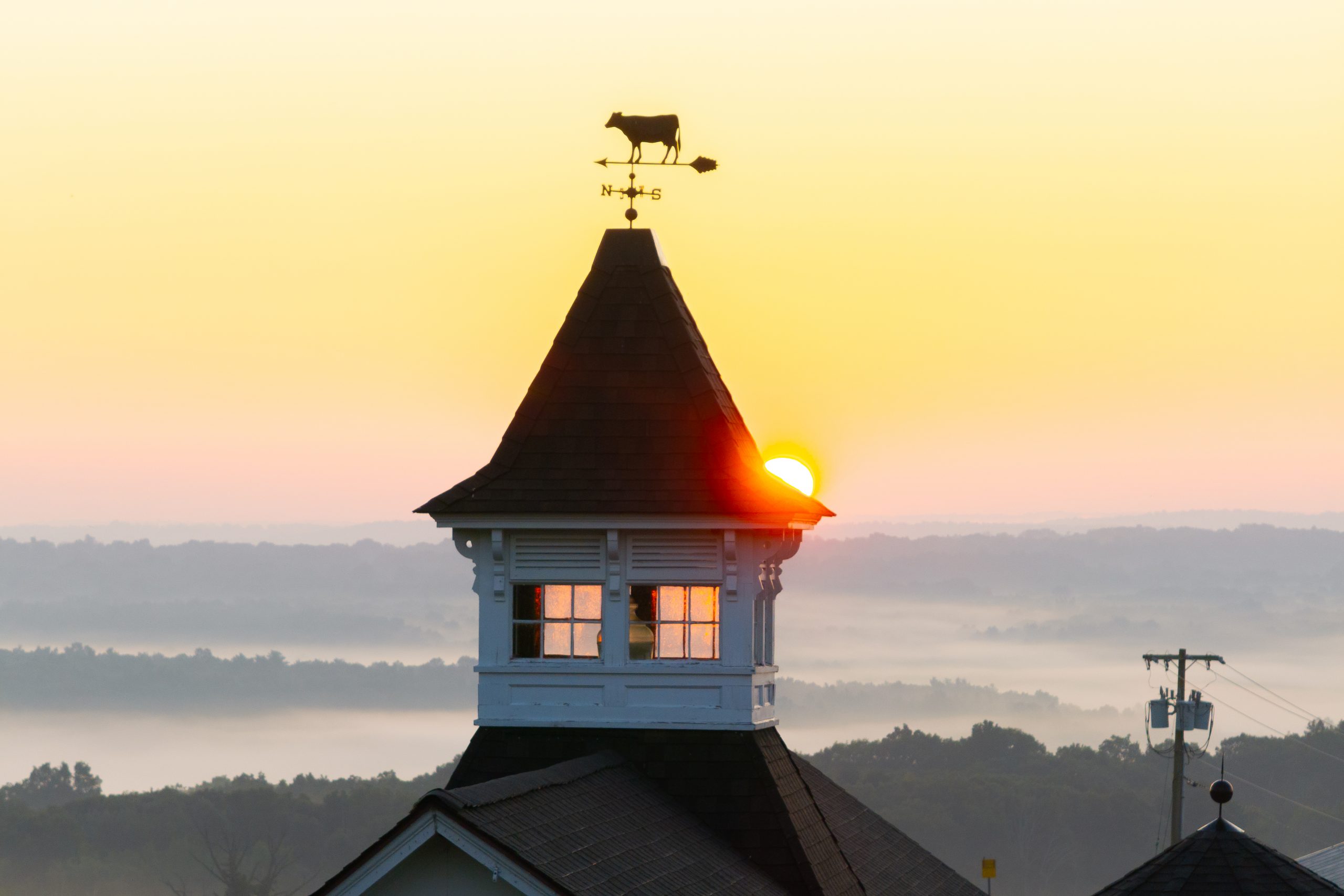Four Decades of Training
Today, 41 years after UConn Health introduced the profession to Connecticut, more than 1,000 paramedics serve the state. At the UConn Health Fire Department, 15 of the 20 firefighters are paramedics.
“The key to the whole thing is, responding in a timely fashion, and taking some of the treatment out, to get to the patient 15 or 20 minutes prior to when they can get to the emergency department,” says UConn Health Fire Chief James Brown.
“To have someone who was clinically dead and came back because of us, then have that guy shake your hand, what other job gives you that?” –Walt Rasmussen, one of the original four UConn Health paramedics

“Fire departments have come a long way because of paramedics,” says Dave Smith, UConn Health’s first firefighter and graduate of the state’s first paramedics training class in 1975. “Just the fact that there are so many more of them is a measure of the success of the paramedic profession.”
Medicine has come a long way too.
“When we first started, there was no such thing as AIDS, nobody knew anything about it,” says Don Perrault, Smith’s paramedic classmate and longtime colleague. “I remember coming in, elbows full of blood. Then around 1980 we started getting reports of this virus that was coming over from Africa, so then they started saying, ‘You’d better think about wearing latex gloves.’
“At first, when we’d go out and treat people and we had those rubber gloves on, they took offense to it. And then over the years, it changed around to the point where when you went in now and you didn’t have gloves on, it was, ‘Don’t touch me until you put your gloves on.’”
For Perrault, a newfound appreciation of his career choice came during a retirement party for Farmington Fire Chief Tim Vibert. In April 2014, a group of retired firefighters, including Perrault, occupied one of the tables, while a group of on-duty paramedics sat at another.

“During the dinner, someone went into cardiac arrest,” Perrault says. “Immediately, that table that was on duty got over—zip—and got him breathing again, and by the time he was being wheeled out he was talking. And as we watched this, I thought, ‘I guess we did start something pretty good.’ It made me feel very proud of the hard work we did way back when that kind of brought it together.”
Not all their encounters were so life-and-death. Walt Rasmussen, another of the four UConn Health firefighters from the state’s first paramedics training class in 1975, recalls a Saturday when an elderly Italian man showed up at the fire house with two trays of cookies and a message: “A Sicilian never forgets.” Rasmussen was one of the paramedics who helped him survive a near-fatal abdominal aortic aneurysm.
“It turned out to be a really rewarding job,” says Rasmussen, who retired in 1999. “To have someone who was clinically dead and came back because of us, then have that guy shake your hand, what other job gives you that?”
Perrault recalls helping deliver a baby in front of a restaurant on Brickyard Road in Farmington. The girl’s grateful parents brought in treats for the paramedics every summer and at Christmas time. She invited him to her wedding, and saved a dance for the man who helped bring her into the world 20-something years earlier.
“All in all, I have to say, I had a lot of fun,” says Perrault, who retired in 1994. “It was a true, true career experience.”
“The fact that so many agencies and companies have embraced this concept that started here four decades ago is a real tribute to the legacy of our firefighter paramedics and their life-saving work,” says UConn Health Chief Administrative Officer Carolle Andrews. “Our fire department’s origination of paramedics and its longevity of service to the community is a tremendous source of pride.”
When Connecticut’s first class of paramedic trainees took shape at UConn Health in 1975, Greg Metcalf was the institution’s public safety director.

“The beautiful thing about the Health Center paramedics of the 70s and 80s that one does not discern when focused on the one point of them being firefighter paramedics is their overall involvement in the community, both the Health Center community and the larger Farmington Valley community,” Metcalf says. “They participated in running 13 EMT training programs, several EMT refresher training programs, and of course the subsequent two paramedic training programs.”
Smith says he and and Jerry Rio, another UConn Health firefighter who graduated from that first paramedic class, were CPR instructors for the Hartford Heart Association.
“We certified hundreds, if not thousands of people in CPR,” Smith says.
UConn Health paramedics also offered an anatomy class using a cadaver, and ride-alongs, where students, EMS providers, or interested members of the community would accompany paramedics on calls. Metcalf says he knows of at least two medical students and a dental student who shifted their career focus to emergency medicine after riding with the paramedics.
“There is not a school in the Farmington Valley that has not had the paramedics and their rescue unit to the school for a presentation or talk,” he says. “And the program ‘A Paramedic’s View of Drinking and Driving’ was presented to over 100,000 Connecticut high school students.”
Whether it was educating others about the field of paramedicine or saving lives by practicing it in the field, paramedics unquestionably changed the dynamics of emergency medicine for the better, says Irene Engel, a nurse supervisor, now retired, who goes back to the early days of UConn Health and its paramedic program.
“Both hospitals and the ERs benefitted so much from paramedics because of the stabilization they could do in the field, patients were in much better condition when they arrived,” Engel says. “They’re communicating with one of our docs in the ER, they have standing orders that we have set up for them. Everywhere, patients have a better chance of surviving and ERs have a better chance of keeping patients alive because of the paramedics.”



